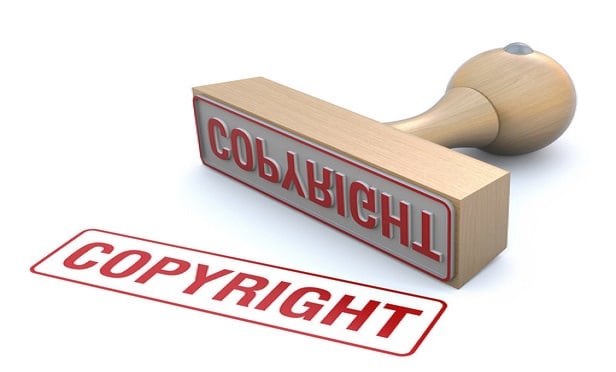Columns & Departments
Bit Parts
Film Clips Included in Talent's Acting Reel Are a Copyright Fair Use Ninth Circuit Finds Judd/Weinstein Meeting Within Scope of California Sexual Harassment Statute Personal Manager's Lawsuit in New York Against Former In-House Counsel Can Move Forward
Features

Man of La Mancha Revival Dispute Involves Whether Attorney/Client Relationship Arose
A thorny concern for lawyers is whether — and if so, when — an attorney/client relationship has been formed with a party with whom the lawyer has entered into a business arrangement. Current litigation over an agreement involving theatrical production rights to the Tony Award-winning musical Man of La Mancha offers some perspective on the issue.
Features

How COVID-19 Has Impacted Broadway Productions
While the theaters of Broadway remain dark, the New York theater community has been left to grapple with challenging legal issues relating to governmental directives, contracts, insurance coverage, refunds, presenting live and prerecorded content on the Internet, and what health and safety measures will be needed once the theaters can reopen.
Features

Copyright Considerations In Artificial Intelligence
In the process of creating new content, AI, which has moved into the entertainment industry, may create copies of copyrighted works in memory storage as a byproduct of its overall output sequence. This article explores authorship and ownership of such AI-generated content, and to what extent, if any, can copyrights be infringed upon when AI reproduces copyrighted works for machine learning.
Features

Delaware Court Dismisses Fox Stockholder's Suit Over Disney Deal
In a decision that narrowed what actions can be brought by Delaware companies' stockholders in the context of a merger, the Delaware Court of Chancery dismissed claims brought against former 21st Century Fox executives, including three members of the Murdoch family.
Columns & Departments
Bit Parts
DGA's "Qualification List" Isn't a "Labor Organization" Under Georgia Law Unlicensed Use of Van Halen Photo in Conjunction With Museum Exhibit Ruled Fair Use
Features

Recent Court Views on "Making Available" Controversy in Copyright Infringement
Federal courts have long disagreed over whether the unauthorized "making available" of a plaintiff's works to the public is sufficient to constitute copyright infringement under the U.S. Copyright Act. Two June District Court decisions demonstrated the differences between the views of the Fourth and Ninth Circuits.
Features

Does Insurance Policy Cover Media Office COVID-19 Closure?
According to news reports, and judging from the plethora of lawsuits filed seeking insurance coverage for lost income incurred as a result of the COVID-19 pandemic, insurance companies are for the most part denying claims for business interruption losses. The type of insurance claim at issue may make a difference.
Features

Commentary: Claims Filing Time Issues on Copyright Ownership from Everly Bros. Case
Don and Phil Everly's flawless harmonies that resulted in a string of hits in the 1950s and '60s regrettably ended in acrimony. The Sixth Circuit recently issued a decision in a dispute between Phil's heirs and Don over copyright ownership of the No. 1 hit "Cathy's Clown," in which concurring Judge Eric E. Murphy raised important questions about when the statute of limitations should begin to run in copyright cases and whether courts have been correctly applying the law.
Features

Counsel Concerns: Ice Cube's Big3 Suit Against League's Lawyers Ends Quietly
Three-on-three basketball league Big3, co-owned by hip hop artist and actor Ice Cube, quietly abandoned a lawsuit accusing the law firm Quinn Emanuel Urquhart & Sullivan of putting its lucrative relationship with the Republic of Qatar ahead of its attorney-client obligations to the fledgling sports project.
Need Help?
- Prefer an IP authenticated environment? Request a transition or call 800-756-8993.
- Need other assistance? email Customer Service or call 1-877-256-2472.
MOST POPULAR STORIES
- The DOJ's Corporate Enforcement Policy: One Year LaterThe DOJ's Criminal Division issued three declinations since the issuance of the revised CEP a year ago. Review of these cases gives insight into DOJ's implementation of the new policy in practice.Read More ›
- Surveys in Patent Infringement Litigation: The Next FrontierMost experienced intellectual property attorneys understand the significant role surveys play in trademark infringement and other Lanham Act cases, but relatively few are likely to have considered the use of such research in patent infringement matters. That could soon change in light of the recent admission of a survey into evidence in <i>Applera Corporation, et al. v. MJ Research, Inc., et al.</i>, No. 3:98cv1201 (D. Conn. Aug. 26, 2005). The survey evidence, which showed that 96% of the defendant's customers used its products to perform a patented process, was admitted as evidence in support of a claim of inducement to infringe. The court admitted the survey into evidence over various objections by the defendant, who had argued that the inducement claim could not be proven without the survey.Read More ›
- The DOJ's New Parameters for Evaluating Corporate Compliance ProgramsThe parameters set forth in the DOJ's memorandum have implications not only for the government's evaluation of compliance programs in the context of criminal charging decisions, but also for how defense counsel structure their conference-room advocacy seeking declinations or lesser sanctions in both criminal and civil investigations.Read More ›
- Use of Deferred Prosecution Agreements In White Collar InvestigationsThis article discusses the practical and policy reasons for the use of DPAs and NPAs in white-collar criminal investigations, and considers the NDAA's new reporting provision and its relationship with other efforts to enhance transparency in DOJ decision-making.Read More ›
- A Playbook for Disrupting Traditional CRMHere's the playbook for disruption: Take attorneys out of the equation. Stop building CRM that succeeds or fails on their shoulders. We need to shift the focus and, instead, build the technology from the ground up for the professionals who actually use it: marketing and business development.Read More ›
